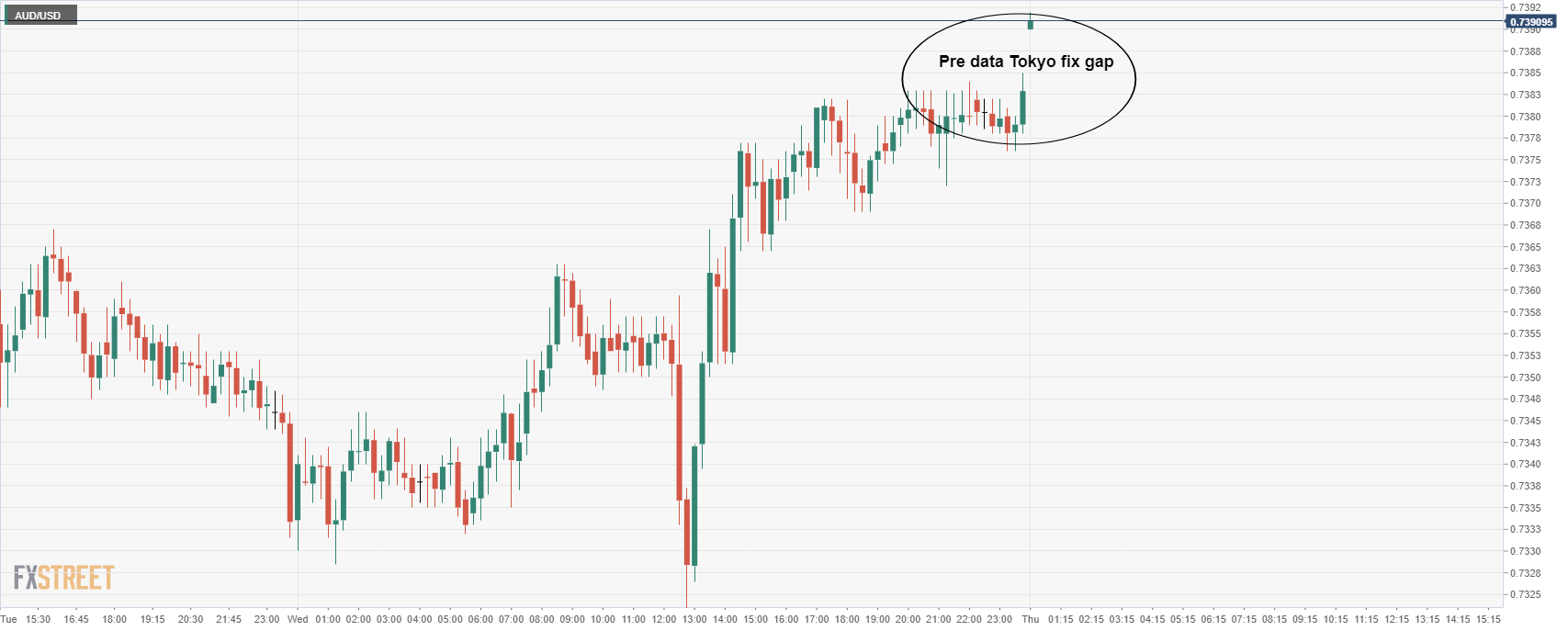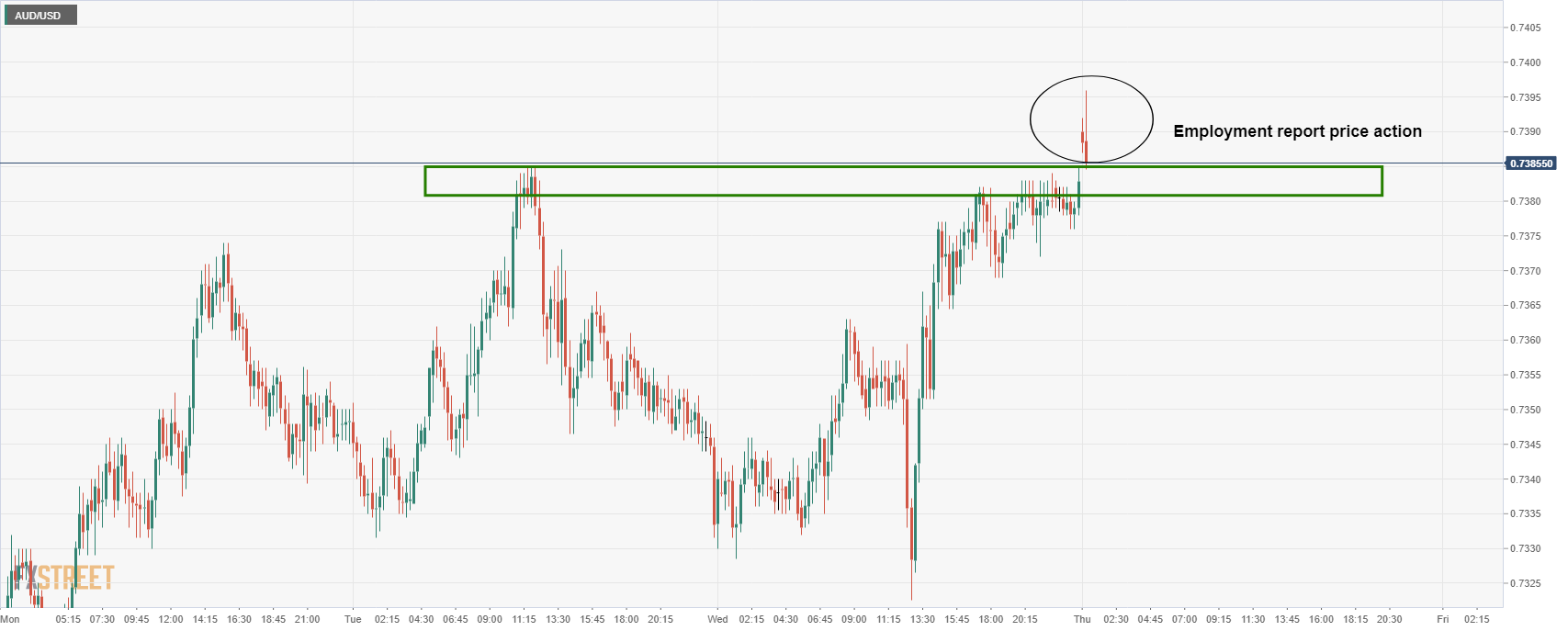Australian Employment report gives something for both bulls and bears
Australia’s labour force survey for September has been released as follows:
- AUSTRALIA SEPT EMPLOYMENT -138.0K S/ADJ (REUTERS POLL: -137.5K)
- 13-Oct-2021 18:30:01 - AUSTRALIA SEPT UNEMPLOYMENT RATE +4.6 PCT, S/ADJ (REUTERS POLL: +4.8)
- 13-Oct-2021 18:30:01 - AUSTRALIA SEPT FULL TIME EMPLOYMENT +26.7K S/ADJ
- 13-Oct-2021 18:30:01 - AUSTRALIA SEPT PARTICIPATION RATE +64.5 PCT, S/ADJ (REUTERS POLL: +64.7 PCT)
AUD/USD implications

On an hourly basis, the price was meeting a meanwhile resistance and the bullish impulse had been decelerating. However, a pre-data spike in the price dissolved the prospects of an imminent retracement although the downside could come back into play following the miss in the headline and the Unemployment Rate worse than the prior report. With that being said, the Participation Rate is likely to blame on that front. For now, the price is consolidated.

Key Notes
- Australian Employment Preview: Significant fall in jobs already priced-in? AUD has room to rise
- Forex Today: Falling yields spur a dollar sell-off
- AUD/USD retains second place on the leader board ahead of key jobs data
About the Employment Change
The Employment Change released by the Australian Bureau of Statistics is a measure of the change in the number of employed people in Australia. Generally speaking, a rise in this indicator has positive implications for consumer spending which stimulates economic growth. Therefore, a high reading is seen as positive (or bullish) for the AUD, while a low reading is seen as negative (or bearish).
About the Unemployment Rate
The Unemployment Rate released by the Australian Bureau of Statistics is the number of unemployed workers divided by the total civilian labour force. If the rate hikes indicate a lack of expansion within the Australian labour market. As a result, a rise leads to weaken the Australian economy. A decrease of the figure is seen as positive (or bullish) for the AUD, while an increase is seen as negative (or bearish).
